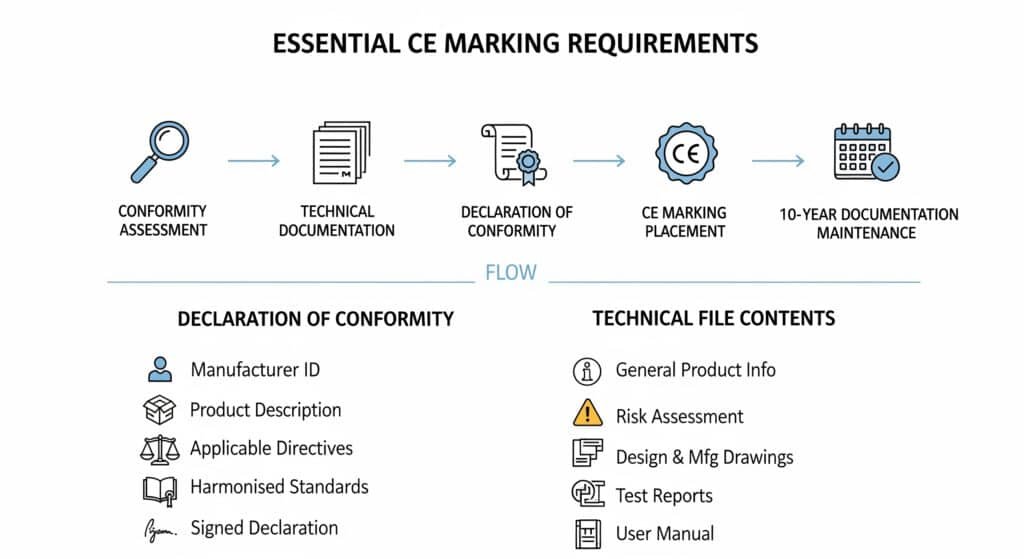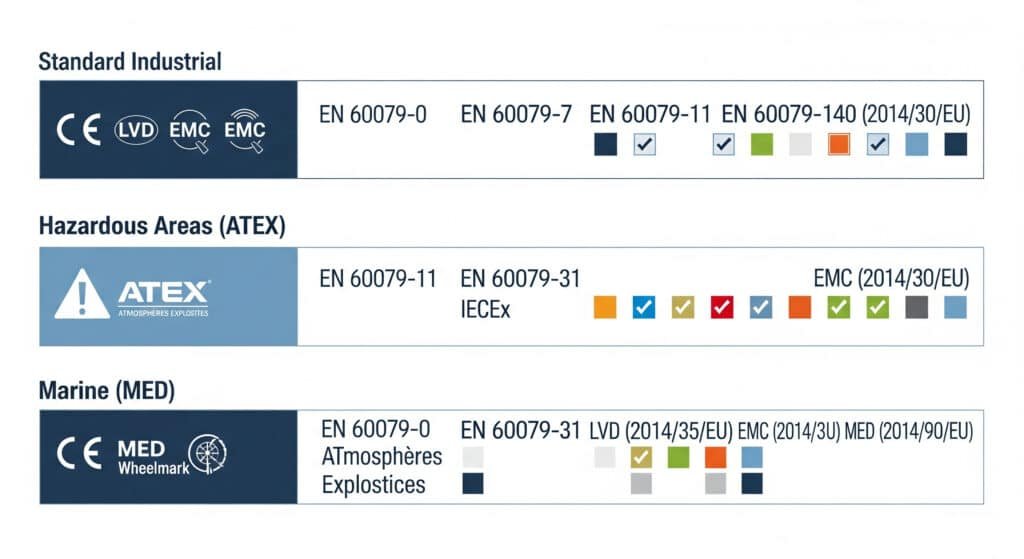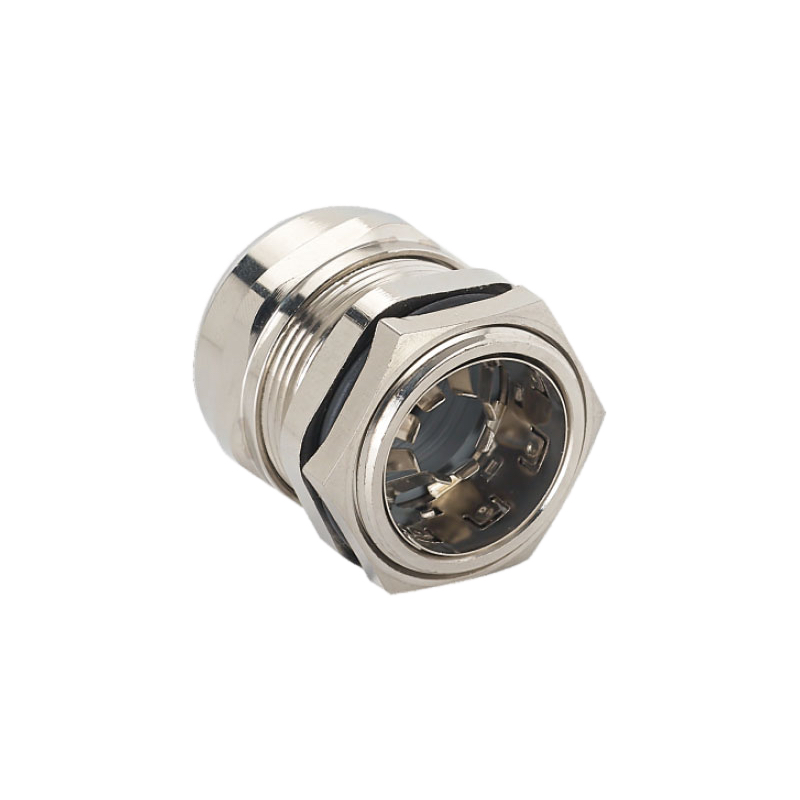Importing cable glands without proper CE marking1 can cost you thousands in delays and fines. European customs authorities are getting stricter every year.
CE marking for cable glands requires compliance with Low Voltage Directive (LVD), Electromagnetic Compatibility (EMC) Directive, and potentially ATEX Directive, supported by proper documentation including Declaration of Conformity, technical files, and test certificates from notified bodies.
Just last month, David called me frustrated. His shipment of 5,000 cable glands was stuck at Hamburg customs for three weeks because the CE documentation wasn’t complete. The delay cost his company €15,000 in project penalties. This happens more often than you’d think.
Table of Contents
- What Are the Essential CE Marking Requirements for Cable Glands?
- Which EU Directives Apply to Different Types of Cable Glands?
- How Do You Verify Authentic CE Documentation from Suppliers?
- What Are the Consequences of Non-Compliant CE Marking for Importers?
What Are the Essential CE Marking Requirements for Cable Glands?
CE marking isn’t just a sticker – it’s a legal declaration that requires specific documentation and testing. Understanding these requirements protects your business from costly compliance issues.
Essential CE marking requirements include: conformity assessment under applicable directives, technical documentation demonstrating compliance, Declaration of Conformity signed by authorized representative, proper CE marking placement on products, and maintenance of documentation for 10 years after market placement.

Core Documentation Requirements
Declaration of Conformity2 (DoC):
- Must identify the manufacturer and authorized representative
- List all applicable EU directives
- Reference harmonized standards used
- Include CE marking affixing date
- Be signed by person with legal authority
Technical File Contents:
- General description of the cable gland
- Conceptual design and manufacturing drawings
- Risk assessment documentation
- List of harmonized standards applied
- Test reports from competent laboratories
- Copies of instructions and safety information
Harmonized Standards for Cable Glands
The most relevant standards include:
| Standard | Application | Scope |
|---|---|---|
| EN 50262 | General cable glands | Mechanical and electrical requirements |
| EN 60079-0 | ATEX cable glands | General requirements for explosive atmospheres |
| EN 60079-1 | Flameproof enclosures | Specific ATEX requirements |
| EN 61984 | EMC requirements | Electromagnetic compatibility |
Note: Following harmonized standards3 provides a presumption of conformity with the technical requirements of the relevant directives.
At Bepto, we maintain compliance with all relevant harmonized standards. Our technical team stays updated with every revision to ensure your imports meet current requirements. 😉
CE Marking Placement Requirements
Physical Marking:
- Minimum height: 5mm (can be smaller if product size requires)
- Visible, legible, and indelible
- Placed on the product or its data plate
- If not possible, on packaging and documentation
Additional Information:
- Identification number of notified body (when applicable)
- Manufacturer’s name and address
- Product type, batch, or serial number
- Year of manufacture
Which EU Directives Apply to Different Types of Cable Glands?
Different cable gland types fall under different EU directives. Misunderstanding this leads to incomplete compliance and potential market surveillance actions.
Cable gland directive compliance depends on application: standard cable glands require LVD and EMC directives, explosion-proof glands need additional ATEX compliance, marine applications may require MED certification, and specialized glands might need RED or Machinery Directive compliance.

Low Voltage Directive (LVD) 2014/35/EU
Applies to cable glands with:
- Rated voltage between 50-1000V AC or 75-1500V DC
- Used in electrical installations
- Designed for permanent installation
Key Requirements:
- Protection against electric shock
- Protection against electrical, thermal, and mechanical hazards
- Protection against non-electrical hazards
- Compliance with essential safety requirements
Hassan recently told me: “Chuck, your clear explanation of LVD requirements helped us avoid a major compliance issue. Our previous supplier didn’t understand the voltage rating implications.”
Electromagnetic Compatibility (EMC) Directive 2014/30/EU
Applies to cable glands that:
- Can generate electromagnetic disturbance
- May be affected by electromagnetic disturbance
- Are intended for use in electromagnetic environments
Testing Requirements:
- Emission testing (conducted and radiated)
- Immunity testing (ESD, RF fields, transients)
- Performance criteria definition
- Technical documentation of EMC measures
ATEX Directive 2014/34/EU
Mandatory for cable glands used in:
- Zone 0, 1, 2 (gas atmospheres)
- Zone 20, 21, 22 (dust atmospheres)
- Equipment categories Ex ia, ib, ic, d, e, etc.
Certification Process:
- Type examination by notified body
- Quality assurance procedures
- Product verification or conformity to type
- Special marking requirements (Ex symbols)
Marine Equipment Directive (MED) 2014/90/EU
Required for cable glands on:
- Commercial vessels over 500 gross tons
- Passenger ships regardless of size
- Equipment covered by SOLAS convention4
Certification Requirements:
- Type approval by notified body
- Wheelmark symbol application
- Certificate of conformity
- Installation and maintenance instructions
How Do You Verify Authentic CE Documentation from Suppliers?
Fake CE marking is rampant in the cable gland industry. Knowing how to verify authentic documentation protects you from legal liability and ensures product quality.
Authentic CE documentation verification requires checking notified body validity, cross-referencing test report details, verifying authorized representative credentials, confirming standard versions and dates, and validating digital signatures or security features on certificates.
Notified Body Verification
Check NANDO Database:
- Visit ec.europa.eu/growth/tools-databases/nando/
- Search by notified body number
- Verify scope of designation
- Confirm current validity status
Note: The NANDO database is the official EU tool for verifying notified bodies5.
Red Flags to Watch:
- Notified body numbers that don’t exist
- Bodies not designated for cable gland testing
- Expired or suspended designations
- Incorrect contact information
Document Authentication Checklist
Declaration of Conformity Verification:
- Manufacturer’s legal name and address match
- Authorized representative details are complete
- Product description is specific and accurate
- Directive references are current
- Signature and date are present
Test Report Validation:
- Laboratory accreditation status (ISO/IEC 17025)
- Test methods match harmonized standards
- Sample identification is clear
- Results meet directive requirements
- Report dates are logical and recent
David shared this experience: “Using your verification checklist, we discovered our potential supplier had fake ATEX certificates. This saved us from a major compliance disaster.”
Common Fraud Indicators
Documentation Red Flags:
- Generic product descriptions
- Missing technical specifications
- Photocopied signatures
- Inconsistent dates
- Poor document quality
Supplier Warning Signs:
- Reluctance to provide original documents
- Inability to explain technical details
- Prices significantly below market
- No authorized representative in EU
- Limited technical support capability
Working with Bepto’s Compliance Team
We understand the complexity of CE marking verification. That’s why we provide:
- Original certificates with digital verification codes
- Direct access to our notified body contacts
- Technical support for documentation questions
- Regular updates on regulatory changes
- Compliance training for your procurement team
What Are the Consequences of Non-Compliant CE Marking for Importers?
The consequences of non-compliant CE marking extend far beyond customs delays. Understanding these risks helps justify investment in proper compliance procedures.
Non-compliant CE marking consequences include customs seizure and storage costs, market surveillance penalties up to €100,000, product recall expenses, liability for accidents or damages, criminal prosecution for serious violations, and permanent damage to business reputation.
Financial Penalties by Country
Germany:
- Administrative fines: €5,000 – €100,000
- Criminal penalties: Up to 1 year imprisonment
- Product withdrawal costs
- Storage and disposal fees
France:
- Administrative sanctions: €15,000 – €75,000
- Criminal fines: Up to €300,000
- Imprisonment: Up to 2 years
- Confiscation of non-compliant products
Netherlands:
- Economic sanctions: €20,500 – €82,000
- Criminal prosecution possible
- Immediate market withdrawal orders
- Publication of violations
Customs and Border Procedures
Detention Scenarios:
- Random compliance checks
- Complaint-triggered inspections
- Systematic surveillance programs
- Post-market surveillance actions
Associated Costs:
- Storage fees: €50-200 per day
- Inspection costs: €500-2,000
- Expert evaluation: €1,000-5,000
- Return shipping: €2,000-10,000
- Project delay penalties: Variable
Hassan told me: “The €25,000 we spent on proper CE compliance was nothing compared to what we would have lost in penalties and delays.”
Liability and Insurance Implications
Product Liability Exposure:
- Accidents caused by non-compliant products
- Property damage from electrical failures
- Personal injury claims
- Business interruption losses
Insurance Considerations:
- Policies may exclude non-compliant products
- Higher premiums for compliance violations
- Difficulty obtaining coverage after violations
- Claims may be denied for regulatory non-compliance
Reputation and Business Impact
Long-term Consequences:
- Customer trust erosion
- Supplier relationship damage
- Competitive disadvantage
- Market access restrictions
- Regulatory scrutiny increase
Recovery Strategies:
- Immediate compliance remediation
- Transparent communication with stakeholders
- Investment in quality systems
- Third-party compliance verification
- Ongoing monitoring and improvement
Bepto’s Compliance Guarantee
We stand behind our CE marking compliance because we understand the stakes. Our guarantee includes:
- Full documentation package with every shipment
- Compliance insurance backing our certificates
- Rapid response to any compliance questions
- Legal support if issues arise
- Replacement guarantee for any non-compliant products
David recently said: “Working with Bepto gives us confidence that our CE compliance is bulletproof. Their support during a market surveillance inspection was invaluable.”
Conclusion
Proper CE marking compliance for cable glands requires systematic verification, authentic documentation, and reliable suppliers to avoid costly penalties and delays.
FAQs About CE Marking for Cable Glands
Q: How long does it take to obtain proper CE marking for cable glands?
A: For standard cable glands, CE marking typically takes 4-8 weeks including testing and documentation. ATEX products require 8-12 weeks due to notified body involvement. At Bepto, we maintain current certificates to ensure immediate compliance for our standard products.
Q: Can I import cable glands with CE marking from any manufacturer?
A: Not all CE markings are valid. You must verify the manufacturer has proper documentation, authorized EU representative, and legitimate test certificates. Many counterfeit CE markings exist in the market, making supplier verification crucial.
Q: What happens if my cable glands are detained at customs for CE marking issues?
A: Detention can last weeks or months while authorities investigate. You’ll pay storage fees, inspection costs, and potential fines. Products may be destroyed or returned at your expense. Prevention through proper supplier selection is far more cost-effective than remediation.
Q: Do I need different CE documentation for different EU countries?
A: No, valid CE marking provides access to all EU member states. However, some countries have additional national requirements or stricter enforcement. The documentation requirements are harmonized across the EU.
Q: How can I ensure my supplier’s CE marking remains valid over time?
A: Establish ongoing verification procedures including regular certificate updates, standard revision monitoring, and periodic compliance audits. At Bepto, we proactively notify customers of any changes affecting their products and provide updated documentation automatically.
-
Read the official guide from the European Commission to understand the legal requirements for CE marking. ↩
-
Learn about the required contents and legal significance of an EU Declaration of Conformity (DoC). ↩
-
Explore how harmonized standards provide a presumption of conformity with EU legislation. ↩
-
Get an overview of the International Convention for the Safety of Life at Sea (SOLAS) from the International Maritime Organization. ↩
-
Access the NANDO database, the official source for searching and verifying EU Notified Bodies. ↩



